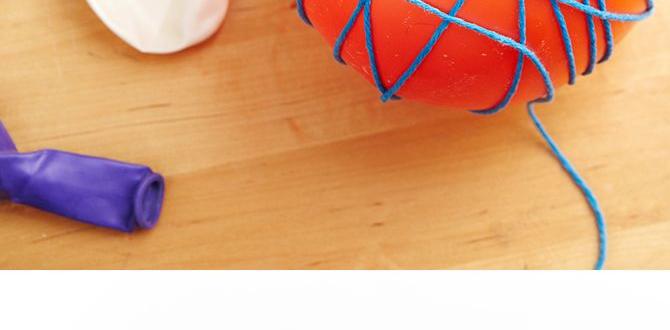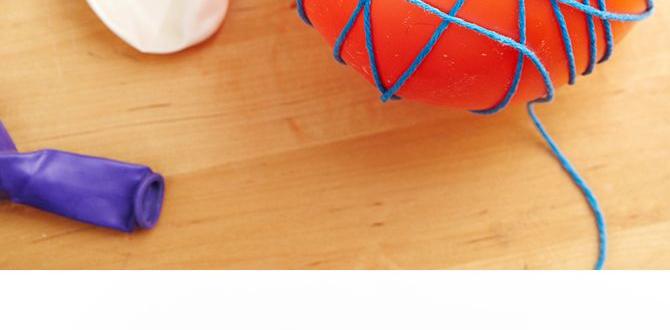Quick Summary: Improve nail gun efficiency with the right accessories like high-quality nails, appropriate air compressors, extension cords, safety gear, and specialized tips. These essentials ensure smoother operation, fewer jams, and better project results for DIYers and woodworkers. Get the most out of your nailer with these practical tips for better efficiency.
Hey DIYers and fellow woodworkers! Jack Shaffer here from Nailerguy. Ever load up your nail gun, ready to tackle that project, only to have it sputter, jam, or not drive nails properly? It’s frustrating, right? You spend good money on a nail gun, and you want it to perform. The good news is, it’s often not the nail gun itself that’s the problem. More often, it’s the supporting cast – in other words, the accessories you’re using with it.
Think of it like a great chef. They have a fantastic knife, but without the right cutting board, fresh ingredients, and proper ventilation, the meal won’t be as good. Your nail gun is the same way. Choosing the right accessories can make a world of difference in how efficiently, safely, and cleanly your nail gun operates. It means fewer headaches and better-looking projects.
In this guide, we’re going to dive deep into the essential accessories that will boost your nail gun’s efficiency. We’ll cover everything from the nails themselves to the power source and safety equipment. By the end, you’ll know exactly what to look for to make your nailer your most trusted DIY partner.
Table of Contents
Understanding Your Nail Gun’s Needs
Before we jump into specific accessories, it’s crucial to understand what makes a nail gun tick. Most nail guns, especially pneumatic ones, work by converting compressed air into kinetic energy. This energy drives a piston, which in turn rapidly propels a nail into your material.
The efficiency of this process depends on a few key factors:
- Consistent Air Supply: Too little air pressure, and the nail won’t seat properly. Too much, and you risk damaging the workpiece or the nailer.
- Nail Quality and Type: Using the wrong size, type, or low-quality nails is a recipe for jams and misfires.
- Tool Maintenance: Like any tool, regular cleaning and lubrication are vital.
- Power Source Capability: For electric nailers, the power cord and outlet matter. For pneumatic, the compressor and hose are key players.
Addressing these factors with the right accessories is like giving your nail gun the perfect fuel and the best support system. It allows it to do what it does best: drive nails accurately and efficiently.
Essential Accessories for Enhanced Nail Gun Efficiency
Let’s break down the accessories that will make the biggest impact. We’ll categorize them for clarity, starting with the most fundamental.
1. The Right Nails: The Foundation of Efficiency
This might seem obvious, but it’s the most common place beginners stumble. Using the wrong nails is like trying to fit a square peg in a round hole – it just doesn’t work well, and often, it breaks things.
Types of Nails
Nails for nail guns come in various types, distinguished by their head shape, shank, and collation method (how they are held together in strips or coils).
- Ring Shank Nails: These have small rings around the shank, which create friction, making them harder to pull out. Great for applications where holding power is critical, like subflooring.
- Smooth Shank Nails: These are the standard. They drive in easily and are ideal for general construction and framing where holding power isn’t the absolute top priority.
- Screw Shank Nails: These have a twisted or helical shank that provides excellent holding power, similar to a screw. Often used for subflooring and other applications requiring high structural integrity.
Collation Types
How nails are bundled together is called collation. This affects how many nails your gun can hold and how smoothly they feed.
- Paper Collated: Nails are glued together at an angle. Common in framing and construction nailers. They tend to work well in most conditions.
- Plastic Collated: Nails are held together by a plastic strip, often at an angle. Can be more durable in wet or dirty conditions than paper collated nails.
- Wire Collated: Nails are welded together onto thin wires. Typically used for roofing nailers.
- Coil Nails: These nails are bundled into a coil, usually with wire or plastic. Coil nailers hold more nails, meaning fewer reloads, which is a huge efficiency booster for repetitive tasks like siding or roofing.
Nail Gauge and Size
Nail gauge refers to the thickness of the nail. A lower gauge number means a thicker nail. Your nail gun is designed to accept specific nail gauges. Always use the gauge recommended for your tool.
The length is just as critical. Too short, and the nail won’t penetrate deeply enough for proper holding. Too long, and it might poke through the other side or bend.
Quality Matters
Cheap, low-quality nails can have inconsistencies in their shanks, heads, or gluing. This leads to:
- Nail Jams: The nail doesn’t feed correctly or bends on impact.
- Misfires: The driver blade hits an improperly seated nail.
- Damaged Work Surfaces: Bent nails can mar your wood.
- Damage to the Nail Gun: Debris from broken nails can clog your tool.
Invest in reputable brands like Paslode, Senco, or DeWalt. It’s a small price to pay for a frustration-free experience and a job well done.
2. Air Compressors and Hoses: The Powerhouse Systems
For pneumatic nailers, the air compressor and its associated hoses and fittings are absolutely critical for efficiency. This is where much of the battle for consistent performance is won or lost.
Air Compressors: Finding the Right Fit
Not all compressors are created equal. You need one that can meet your nailer’s demands.
Key specifications to look for:
- CFM (Cubic Feet per Minute): This is the most important spec. It measures how much air the compressor can deliver. You’ll find two CFM ratings: one at 90 PSI (pounds per square inch) and another at a lower pressure (e.g., 40 PSI). Always use the 90 PSI rating for nail guns, as most operate in this range.
- PSI (Pounds per Square Inch): This is the pressure of the air. Your nail gun will have a recommended operating pressure range.
- Tank Size Gallons: A larger tank stores more air, meaning the compressor motor doesn’t have to run as often. This is especially helpful for framing nailers or when driving many nails in quick succession.
How to Choose: Check your nail gun’s manual. It will specify the CFM required at 90 PSI. Always ensure your compressor’s CFM rating at 90 PSI is higher than what your nail gun needs. A general-purpose framing nailer might need 4-5 CFM at 90 PSI, while a finish nailer might only need 1-2 CFM. For a single finish nailer, a small pancake compressor might suffice. For framing or multiple nail gun users, you’ll need a larger, beefier compressor.
To learn more about compressor specifications and how they relate to tools, the U.S. Department of Energy offers excellent resources on compressed air system efficiency.
Air Hoses: The Lifeline
Your air hose connects the compressor to the nail gun. The wrong hose can strangle airflow and kill efficiency.
- Hose Diameter: This is crucial for airflow. Most DIYers will use 1/4-inch or 3/8-inch diameter hoses. For longer runs (over 50 feet) or higher CFM tools, a 3/8-inch hose is better to avoid pressure drop. A 1/4-inch hose is usually fine for finish nailers and shorter runs.
- Hose Length: Longer hoses mean more friction and potential pressure drop. Try to use the shortest hose practical for your job.
- Hose Material: Rubber hoses are durable but can be heavy and stiff in cold weather. PVC hoses are lighter and more flexible but can degrade faster. Polyurethane hoses offer a good balance of flexibility and durability.
- Hose Fittings (Couplers and Plugs): Ensure you have the correct fittings for your compressor and nail gun. Industrial “m” style or “T” style fittings are common and offer good airflow compared to lighter-duty fittings.
A properly sized, high-quality hose with good fittings ensures that the air pressure and volume produced by your compressor actually reach your nail gun. This is essential for consistent power and fewer jams.
Air Filters and Regulators
These small but mighty accessories protect your nail gun and ensure consistent operation.
- Air Filter: Prevents dust, debris, and moisture from entering your nail gun. Moisture is a nailer’s enemy, causing rust and increasing friction.
- Regulator: This is non-negotiable. It allows you to set and maintain the exact air pressure your nail gun needs. Too high, and you risk damage; too low, and it won’t perform optimally. Most compressors have a built-in regulator, but an inline regulator placed closer to the tool provides more precise control.
Many modern compressors combine filter and regulator functions into a single unit mounted near the air outlet. If yours doesn’t, consider adding an inline filter/regulator before your hose.
3. Power Sources for Electric & Cordless Nailers
If you’re using electric or cordless nailers, the power source and its delivery are key to efficiency.
Extension Cords (for Corded Electric Nailers)
A corded electric nailer is only as good as the power reaching it. Using an undersized extension cord is like trying to feed a steak through a straw – it restricts the flow of electricity.
- Gauge (AWG): Lower AWG numbers mean thicker wires and better conductivity. For most common nail gun use (under 50 feet), a 14-gauge cord is usually sufficient. For longer runs or higher-wattage tools, step up to a 12-gauge cord.
- Length: Again, shorter is better to minimize voltage drop.
- Condition: Always use cords that are in good condition, with no nicks, cuts, or frayed wires.
Using the correct gauge extension cord ensures your electric nailer receives consistent voltage, leading to proper driving power and fewer stalled nails.
Batteries (for Cordless Nailers)
For battery-powered nailers, the battery is everything!
- Capacity (Ah – Amp-hours): A higher Ah rating means the battery can power the tool for longer on a single charge. For extended use or large projects, a higher capacity battery is essential for uninterrupted workflow.
- Charge Level: Always start your project with a fully charged battery. A partially charged battery may not have enough power to drive nails effectively, especially into harder materials.
- Battery Health: Over time, all batteries degrade. If your cordless nailer is starting to perform poorly, the battery might be the culprit.
Many cordless systems offer multiple battery options (e.g., a 2Ah for lighter use and a 4Ah or 5Ah for more demanding jobs). Choose the battery that best suits your typical project needs.
4. Safety Equipment: Preventing Downtime
While not accessories that directly boost firing speed, safety accessories are crucial for long-term efficiency and preventing costly downtime due to injury.
Eye Protection
This is non-negotiable. Safety glasses or goggles are a must. Small debris, nail fragments, or even wood splinters can fly off during operation. Protect your eyes!
- ANSI Z87.1 Standard: Look for safety glasses that meet this standard.
- Fit: Ensure they fit comfortably and snugly to prevent debris from getting around the edges.
Hearing Protection
Nail guns, especially framing nailers, can be LOUD. Prolonged exposure to high noise levels can cause permanent hearing damage. Earplugs or earmuffs are essential, particularly for extended use.
Work Gloves
Good quality work gloves protect your hands from splinters, abrasions, and minor impacts. They also improve grip, which can help you handle the tool more securely.
Dust Mask or Respirator
When working with wood, especially MDF or treated lumber, fine dust particles are produced. A dust mask or respirator protects your lungs from these irritants.
Investing in good safety gear means you can work confidently and without interruption. An injury can sideline you for weeks, completely halting project efficiency.
5. Specialized Tips and Accessories
Beyond the essentials, a few other accessories can fine-tune your nail gun’s performance and improve your results.
No-Mar Tips
Many nail guns come with a “no-mar” tip (often a soft plastic cap that fits over the nose of the tool). If yours didn’t, or if it’s worn out, get one! This is invaluable when working with finished surfaces like trim or cabinetry. It prevents accidental dents and marks from the nailer’s nose hitting the wood.
Depth Adjustment Dial
Most modern nail guns have a depth adjustment feature, usually a small dial or wheel near the nose. While not a separate accessory, knowing how to use it is vital for efficiency. Setting the correct depth means nails are driven flush, not proud (sticking out) or overdriven (sunk too deep). This saves you from having to hammer in nails or fill holes.
Swivelling Air Coupler
A 360-degree swivel coupler on your air hose allows the hose to move freely without twisting. This reduces tangles and makes maneuvering the nail gun much easier, especially in tight spaces. It adds a touch of convenience that boosts your workflow.
Belt Hook (Accessory for some models)
If you’re working on a large job site, a belt hook can be incredibly useful. It allows you to hang the nail gun on your belt when not in use, keeping it handy and out of the way. This saves time spent setting the tool down or searching for it.
Oil for Pneumatic Lubrication
Pneumatic nail guns require a few drops of specialized pneumatic tool oil periodically to keep the internal mechanisms lubricated. This prevents wear, reduces friction, and ensures smooth operation. Most manufacturers recommend a light, non-detergent oil. Check your manual for the recommended type and frequency.
Using these specialized accessories and features ensures precision and ease of use, contributing significantly to overall project efficiency and quality.
Organizing and Maintaining Your Nail Gun System
Efficiency isn’t just about the parts; it’s also about how you manage your tools and accessories.
Storage
Keep your nail gun, compressor (if portable), hoses, and nails organized. A dedicated toolbox or carrying case for your nailer and its immediate accessories (like sample nails and no-mar tips) is a great idea. For pneumatic setups, a rolling cart can be a lifesaver, keeping your compressor, hose, and starter nails all in one place.
Maintenance Schedule
Set aside time for regular maintenance:
- After Each Use: Wipe down your nail gun, clear any dust or debris, and check the nosepiece.
- Periodically (weekly/monthly depending on usage): Lubricate pneumatic nailers, check air filters on compressors, inspect hoses for wear or leaks.
- Annually: Some manufacturers recommend more in-depth servicing for pneumatic tools, such as checking O-rings and seals.
A well-maintained tool is an efficient tool. It’s also a safer tool.
Troubleshooting Common Efficiency Issues with Accessories
Sometimes, despite having the right accessories, things can still go wrong. Here’s how accessories can influence common problems:
Nail Jams
Accessory culprits: Low-quality nails, incorrect nail size, insufficient air pressure (undersized compressor or hose), or a dirty/unlubricated tool (due to poor filtration).
Solution: Switch to higher-quality, correctly sized nails. Ensure your compressor meets CFM requirements and your hose has adequate diameter. Regularly clean and lubricate your tool.
Nails Not Driving Fully
Accessory culprits: Low air pressure (compressor not keeping up, leaky hose, too long/narrow a hose), incorrect depth setting, or a battery on its last legs (cordless).
Solution: Check and adjust air pressure with a regulator. Fix leaks. Use a properly sized hose. Ensure battery is fully




